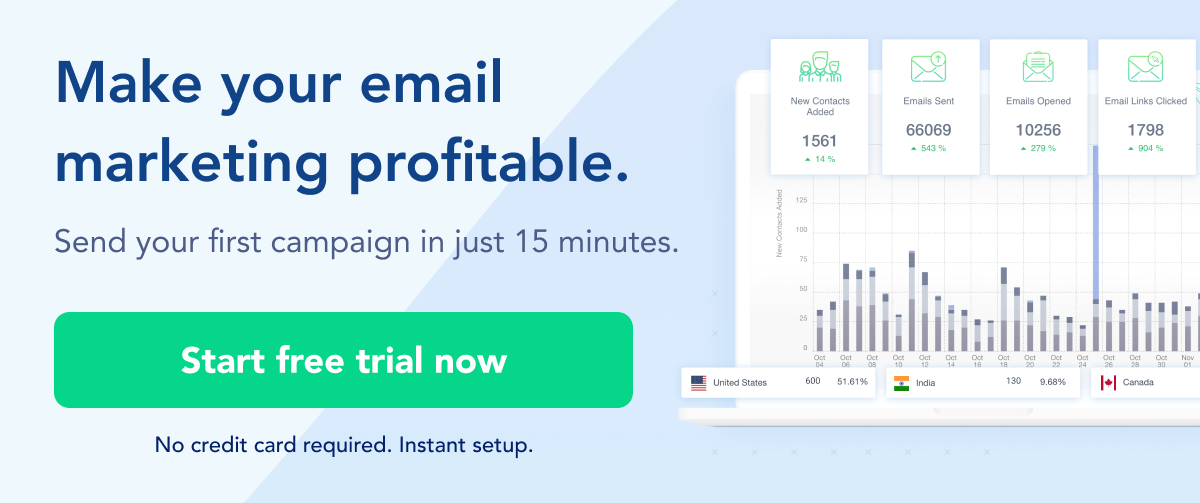Timed popups are a specific type of popup window that appears on a webpage after a predetermined amount of time. Unlike immediate popups that appear as soon as a page loads, or action-based popups triggered by user behavior, timed popups rely on a set time delay to capture the user's attention. This delay can be calibrated to match the average time users spend on a page or tailored to appear at moments when engagement is likely to be highest.
These popups are driven by a simple yet powerful principle: timing is everything.
They leverage the balance between user engagement and interruption. When executed well, they catch users at an opportune moment, enhancing their experience rather than disrupting it.
In this article, you will learn:
- The benefits and challenges associated with using timed popups.
- Real-life examples that illustrate the effective use of timed popups.
Let's explore how timed popups can be a game-changer for your online engagement and marketing strategies.
Table of Contents
Benefits of Timed Popups
Timed popups can be a real game-changer when it comes to engaging with your website visitors. They offer a few key advantages that can help boost your marketing efforts:
- Enhanced Engagement: By popping up at just the right time, these pop ups can grab the attention of visitors when they're most likely to be receptive. For example, a popup appearing after a visitor has been reading your blog for a minute suggests they're interested in your content, making them more likely to engage with your popup.
- Better Conversion Rates: Timed popups give you the chance to present a call-to-action (CTA) like a newsletter sign-up or a special offer at a moment when visitors are more engaged. This often leads to higher conversion rates compared to popups that appear immediately upon entering a site.
You can trigger them based on entry or exit intent, time, scroll behavior, clicks and more.
- Customizable Timing: One of the coolest things about timed popups is that you can set them to appear at various times. This flexibility lets you test and find out what works best for your audience. Maybe your visitors respond better to pop ups at 30 seconds, or perhaps 2 minutes is the sweet spot.
- Avoiding 'Popup Fatigue': Because they don't show up right away, timed popups are less likely to annoy your visitors. This is key in a world where people are bombarded with information and can get easily frustrated by intrusive ads.
Now, it's not all sunshine and rainbows. Timed popups, like any tool, have their drawbacks.
Drawbacks of Timed Popups
- Can Be Interruptive: Even when timed well, popups can sometimes interrupt the user's browsing experience. If a popup appears while a reader is deeply engaged in an article, it might be more annoying than helpful.
- User Experience Concerns: The key to successful popup use is balance. Too many popups, or poorly timed ones, can frustrate visitors and lead them to leave your site. It's crucial to think about the user's journey and how the popup fits into it.
- Mobile Responsiveness Issues: With more people browsing on mobile devices, ensuring your popups are mobile-friendly is essential. A popup that looks great on a desktop might be too intrusive or difficult to close on a smaller screen.
- Potential Impact on SEO: Search engines like Google take user experience into account. If your timed popups are seen as intrusive or detrimental to the user experience, it could negatively impact your site's search engine ranking.
- Ad-Blocker Interference: Some of your audience might use ad blockers that can prevent popups from appearing. This reduces the effectiveness of your popup strategy, especially if a significant portion of your audience uses these tools.
By keeping these considerations in mind, you can fine-tune your use of timed popups to ensure they contribute positively to your site's user experience and marketing goals. Next, we'll look at some best practices to help you make the most out of your timed popups.
Best Practices for Timed Popups
To make the most out of timed popups, it's crucial to follow some best practices. These tips will help you use timed popups effectively while maintaining a positive user experience:
- Find the Right Timing: The magic of timed popups lies in their timing. Test different intervals to see what works best. As a starting point, consider setting the popup to appear after a user has spent enough time to indicate interest but before they might leave the page.
- Keep Your Design Clean and Inviting: A cluttered or aggressive popup design can be off-putting. Opt for a clean, aesthetically pleasing design that aligns with your website's look and feel. Make sure it's easy for users to close the popup if they're not interested.
- Craft a Compelling Message: Your popup should have a clear and engaging message. Whether it’s offering a discount, a free download, or a newsletter subscription, make sure the value is clear and enticing.
- A/B Testing is Your Friend: Experiment with different versions of your popup to see which one performs better. Test variations in wording, design, and timing. This data-driven approach will guide you in refining your strategy.
- Respect the User Journey: Consider the context in which your popup appears. Does it add value to the user's experience at that particular moment? The goal is to complement, not disrupt, the user journey.
- Monitor Performance and Adjust Accordingly: Keep an eye on metrics like popup engagement rates and the bounce rate of pages with popups. These insights will help you tweak your strategy for better performance.
By following these best practices, you can ensure your timed popups are an asset, not a hindrance, to your site’s user experience and conversion goals.
Real-World Examples of Timed Popups
Refer a friend popup
This popup from an ecommerce brand is an example of how timed popups can be used effectively. It provides a clear value proposition, uses engaging visuals, and has a strong call to action, all of which can contribute to a positive user experience and potentially higher conversion rates.
Abandoned cart timed popup
This popup is timed to catch users who are considering a purchase, providing them with a last-minute incentive to complete the transaction.
It is a good example of how to use a discount to potentially increase cart conversion rates. The messaging is straightforward, the design is clean and brand-consistent, and the CTA is clear, all of which contribute to an effective popup strategy.
Quiz timed popup
This popup is timed to capture the interest of visitors who are already engaging with the content and potentially considering a purchase.
It effectively uses engagement and personalization to guide the visitor towards a more customized experience, which can be a powerful tool in converting casual browsers into leads or customers.
Wrapping Up
Timed popups, when crafted with care, can elevate your user engagement and conversion strategy. They hinge on the power of perfect timing—appearing just when the user is most receptive. Throughout this article, we've learned that effective timed popups require a blend of appealing design, strategic timing, and compelling content. We've also discussed the importance of balancing the advantages of timed popups, like increased engagement and conversions, against potential drawbacks such as user annoyance or disruption to the browsing experience.
Key takeaways include:
- Strategic Timing: Tailoring popup timing to align with user engagement levels can maximize effectiveness.
- Design and Messaging: Clean, consistent design paired with a clear message encourages user interaction.
- User Experience: Thoughtfully implemented popups enhance, rather than detract from, the overall user experience.
For those interested in integrating timed popups into their marketing toolkit, the natural next step would be to explore popup builders and platforms that offer customization, tracking, and A/B testing capabilities. One such tool is SendX. Get a 14-day free trial to test all its features & capabilities.
The goal of a timed popup is not just to capture attention, but to contribute positively to the user's journey on your site. With the insights and examples we've shared, you're now equipped to design timed popups that not only look good but also work effectively to meet your marketing goals.



